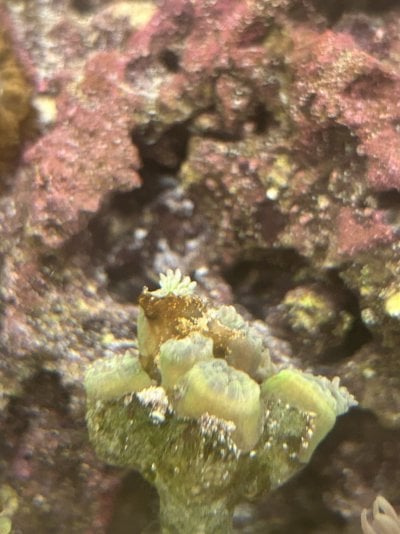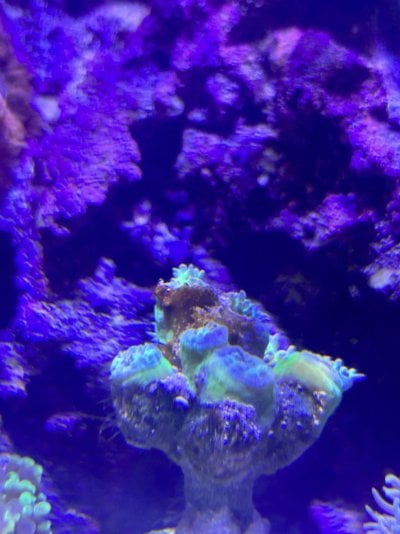Navigation
Install the app
How to install the app on iOS
Follow along with the video below to see how to install our site as a web app on your home screen.
Note: This feature may not be available in some browsers.
More options
You are using an out of date browser. It may not display this or other websites correctly.
You should upgrade or use an alternative browser.
You should upgrade or use an alternative browser.
HELP! Is this brown jelly disease on my Duncan?
- Thread starter HauntedFish
- Start date
- Tagged users None
Thank you for replying! Would this type of algae be dangerous to the coral? It has been retracting a lot more latelyLooks like algae me.
Yes, it is, the algae will spread and in the end, kill the polyp.Thank you for replying! Would this type of algae be dangerous to the coral? It has been retracting a lot more lately
Is it stuck on the coral or can it be gently blown off?
Some pest type algae’s and bacteria’s just can be removed.
I gently rubbed it off, my concern is it spreading to other corals or coming back. I am currently dealing with large cell amphidinium dinos, but I heard it’s not supposed to be toxic to coralsYes, it is, the algae will spread and in the end, kill the polyp.
Is it stuck on the coral or can it be gently blown off?
Some pest type algae’s and bacteria’s just can be removed.
Any Dino’s I’ve worked definitely made corals upset.I gently rubbed it off, my concern is it spreading to other corals or coming back. I am currently dealing with large cell amphidinium dinos, but I heard it’s not supposed to be toxic to corals
In the end will kill by covering.
Do yours lift off the sand a rock at night, then reappear in the morning when lights come on.?
Yes, which is why I held off on using UV. I was told to slowly increase silicate to create a diatom bloom and create competition.Any Dino’s I’ve worked definitely made corals upset.
In the end will kill by covering.
Do yours lift off the sand a rock at night, then reappear in the morning when lights come on.?
Winning Dino’s is a numbers game.Yes, which is why I held off on using UV. I was told to slowly increase silicate to create a diatom bloom and create competition.
I’d be running UV while dark and change socks when lights come on.
Keep nutrients up and a daily dash of bacteria and phyto will feed the good guys which outcompete the Dino’s in the end.
About a month this way.
Will certainly do these, thank you!Winning Dino’s is a numbers game.
I’d be running UV while dark and change socks when lights come on.
Keep nutrients up and a daily dash of bacteria and phyto will feed the good guys which outcompete the Dino’s in the end.
About a month this way.
Similar threads
- Replies
- 3
- Views
- 177
- Replies
- 5
- Views
- 335


















